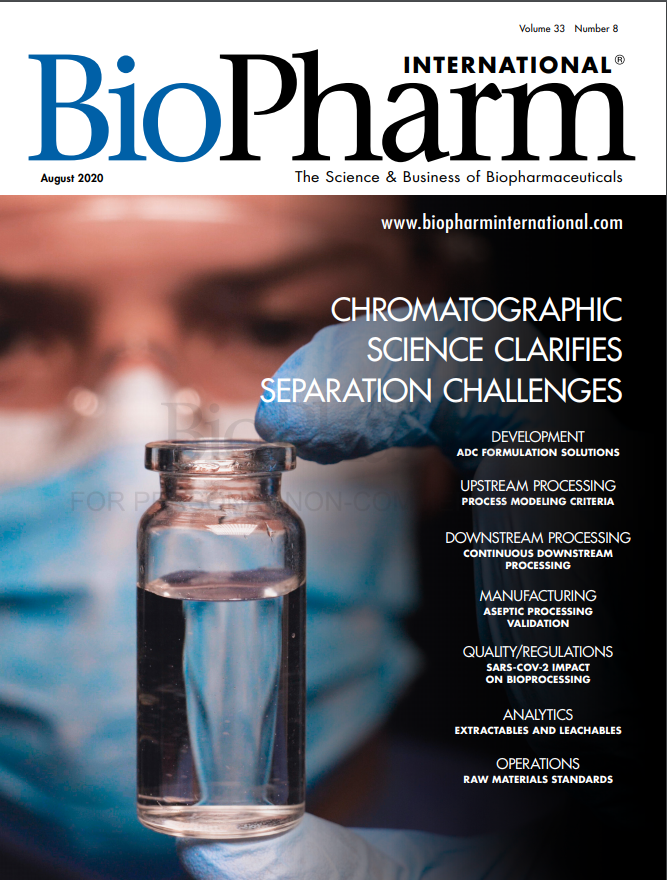CDMOs Build Fill/Finish Capacity for COVID-19 Vaccines
Filling and packaging of primary containers is a crucial piece of COVID-19 vaccine production.
Building up adequate fill/finish capacity and ensuring the supply of materials for primary packaging containers are crucial requirements in the race to develop COVID-19 vaccines and therapeutics. Contract development and manufacturing organizations (CDMOs) are essential components for handling the expected surge of capacity needed, and several have announced manufacturing agreements and capacity expansions.
Catalent now has manufacturing agreements with COVID-19 vaccine candidate developers, including Johnson & Johnson’s (J&J) Janssen (1), Moderna (2), and AstraZeneca (3) to provide fill/finish capabilities. Catalent is working with more than 40 customers on COVID-related antivirals, vaccines, diagnostics, and treatments for symptoms and effects of COVID-19 (4). At the Catalent Biologics business unit’s facility in Bloomington, IN, the company reported that the scale-up in production would include the use of two new high-speed machines (1). The company is rapidly scaling segregated manufacturing capacity at the Bloomington facility to support dedicated production of J&J’s investigational vaccine candidate and plans to hire approximately 300 additional employees to meet manufacturing schedules by January 2021 (1).
The Bloomington facility is also being prepared to provide vial filling and packaging capacity for Moderna’s mRNA-based COVID-19 vaccine candidate (mRNA-1273). Barrier isolator technology will be used for filling. Catalent expects to produce an initial 100 million doses of the vaccine candidate for the US market starting in the third quarter of 2020, and the companies are discussing fill/finish capacity for continued commericial production of hundreds of millions of additional doses (2).
The Catalent Biologics facility in Anagni, Italy, is being prepared for commercial-scale vial filling and packaging for AstraZeneca and the University of Oxford’s adenovirus vector based COVID-19 vaccine candidate, AZD1222. The facility will be able to supply hundreds of millions of doses of the vaccine candidate from August 2020, and potentially through to March 2022, should the product be approved by regulatory agencies (3).
One of the funding sources for COVID-19 countermeasures is the US government, which is building a network of manufacturing partnerships through programs such as Operation Warp Speed, a partnership among components of the Department of Defense (DoD) and the Department of Health and Human Services (HHS), including the Centers for Disease Control and Prevention (CDC), FDA, the National Institutes of Health (NIH), and the Biomedical Advanced Research and Development Authority (BARDA) (5). In addition to contracts with J&J, AstraZeneca, and Moderna, in June 2020 HHS contracted with Emergent BioSolutions for manufacturing capacity, including an $85.5-million investment for the rapid expansion of the company’s viral and non-viral CDMO fill/finish capacity for vaccine and therapeutic manufacturing (6).
References
1. Catalent, “Catalent Signs Agreement with Johnson & Johnson to be US Manufacturing Partner for Lead COVID-19 Vaccine Candidate,” Press Release, April 29, 2020.
2. Catalent, “Moderna and Catalent Announce Collaboration for Fill-Finish Manufacturing of Moderna’s COVID-19 Vaccine Candidate,” Press Release, June 25, 2020.
3. Catalent, “Catalent Signs Agreement with AstraZeneca to Manufacture COVID-19 Vaccine Candidate,” Press Release, June 15, 2020.
4. Catalent, “Catalent COVID-19 Response,” Catalent.com, accessed July 9, 2020.
5. HHS, “Fact Sheet: Explaining Operation Warp Speed,” hhs.gov, June 16, 2020.
6. HHS, “HHS Adds $628 Million to Contract with Emergent BioSolutions to Secure CDMO Manufacturing Capacity for Operation Warp Speed,” Press Release, June 1, 2020.
Article Details
BioPharm International
Vol. 33, No. 8
August 2020
Pages: 25
Citation
When referring to this article, please cite it as J. Markarian, “CDMOs Build Fill/Finish Capacity for COVID-19 Vaccines,” BioPharm International 33 (8) 25 (2020).

Thermo Fisher Opens Advanced Therapies Collaboration Center in California
April 18th 2025The 6000-square-foot facility will provide cell therapy developers the support they need to transition to CGMP manufacturing, and an expanded footprint of the new center is expected to open in Philadelphia later in 2025.